Abstract
Homma, J. Yuzuru (University of Tokyo, Tokyo, Japan), and Nachiko Suzuki. “Cell-wall protein A” of Pseudomonas aeruginosa and its relationship to “original endotoxin protein.” J. Bacteriol. 87:630–640. 1964.—To compare the properties of two kinds of proteins, one obtained from the cell wall of Pseudomonas aeruginosa and the other from the endotoxin in the autolysate, the proteins were purified to such an extent that they were proved to be homogeneous by zone electrophoretic and ultracentrifugal analyses. Although there were some differences between the two in such values as nitrogen and phosphorus contents and sedimentation constants, their protein portions were found similar to each other in the ratio of amino acid compositions. It was proved serologically that the two proteins possessed a common specific antigen. They were found to be the same in their potencies in eliciting the Shwartzman phenomenon and pyrogenic reaction. The results of pyocine tests with various sensitive strains revealed that, against the sensitive strains, the spectra of both proteins were almost the same. Their pyocine activities were destroyed through digestion by protease, trypsin, and Nagarse. Either of the rabbit antisera against the two proteins could neutralize pyocine activities of both proteins. Serum-absorption tests proved that the pyocine-neutralizing antibodies of both antisera could be completely absorbed with each of the proteins. Under appropriate conditions, their pyocine activities were masked partially in vitro by the lipopolysaccharde of the endotoxin.
Full text
PDF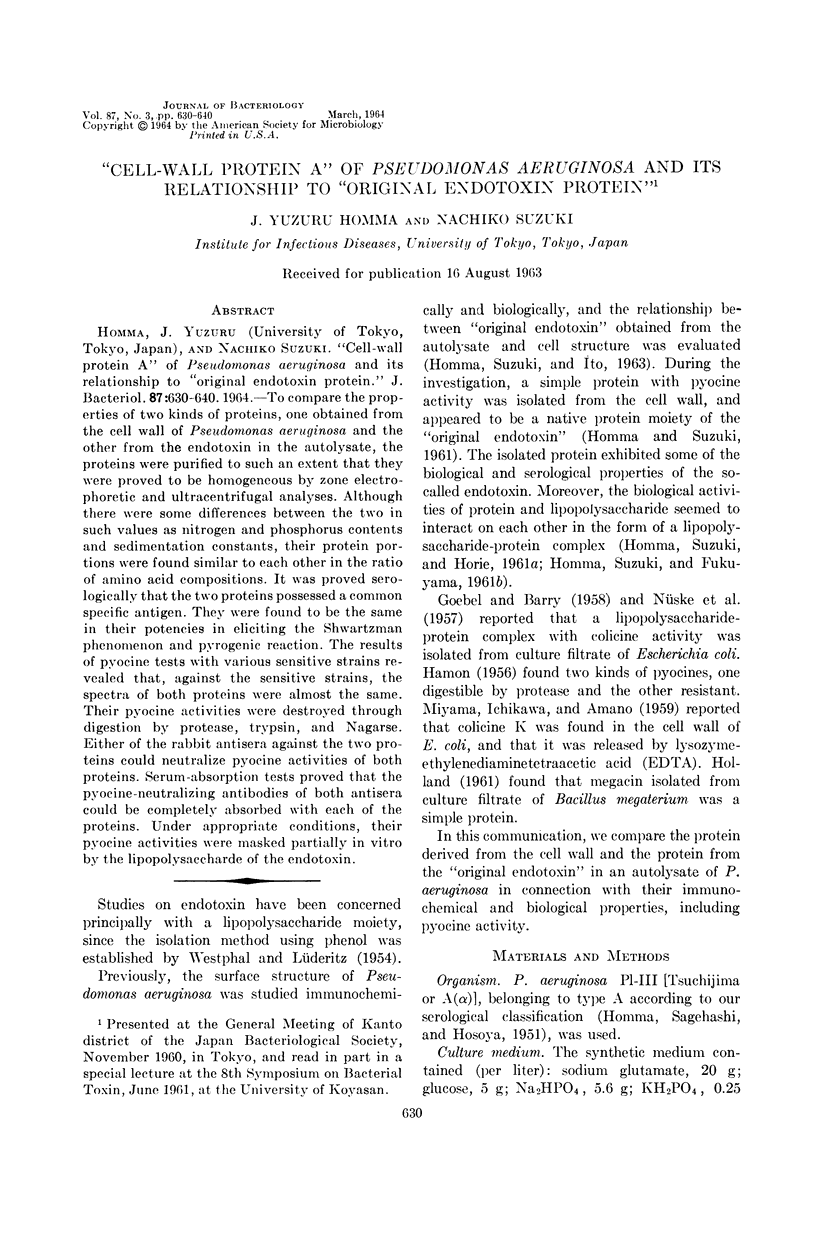
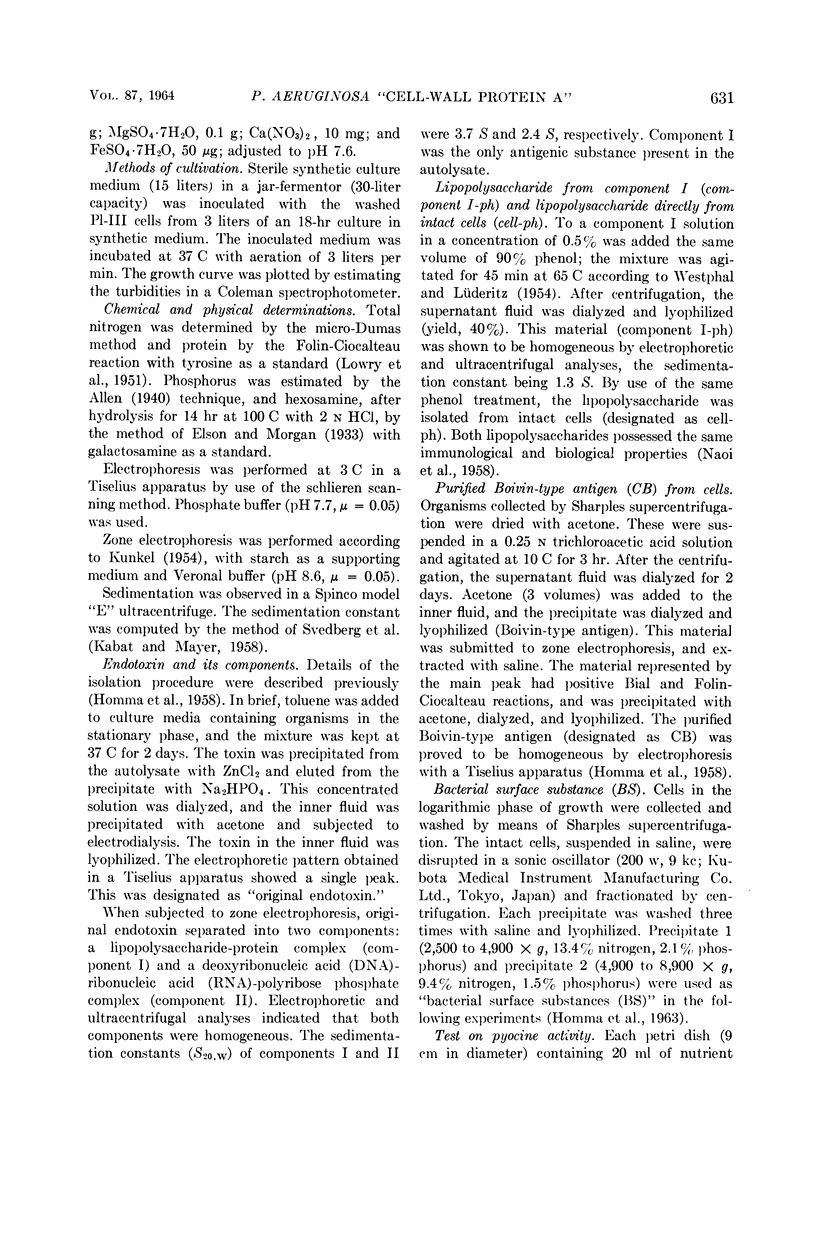
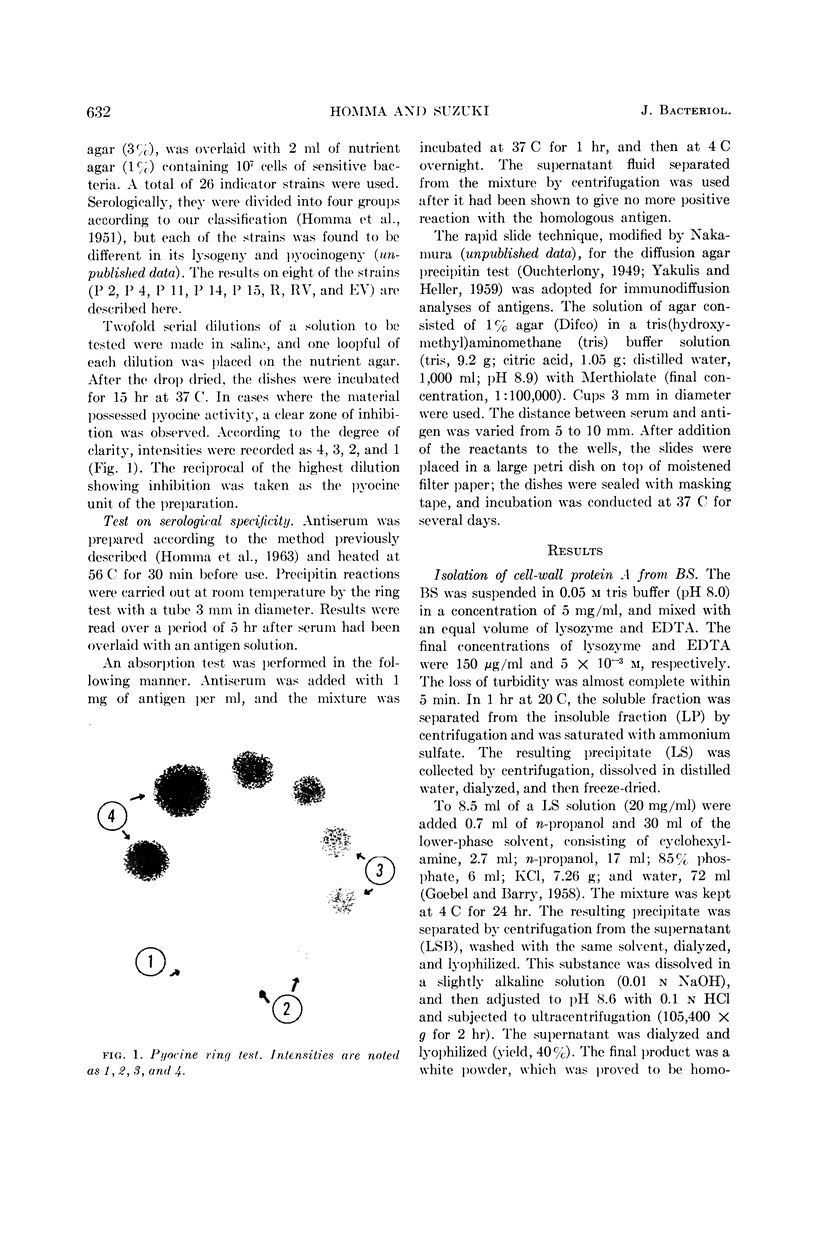
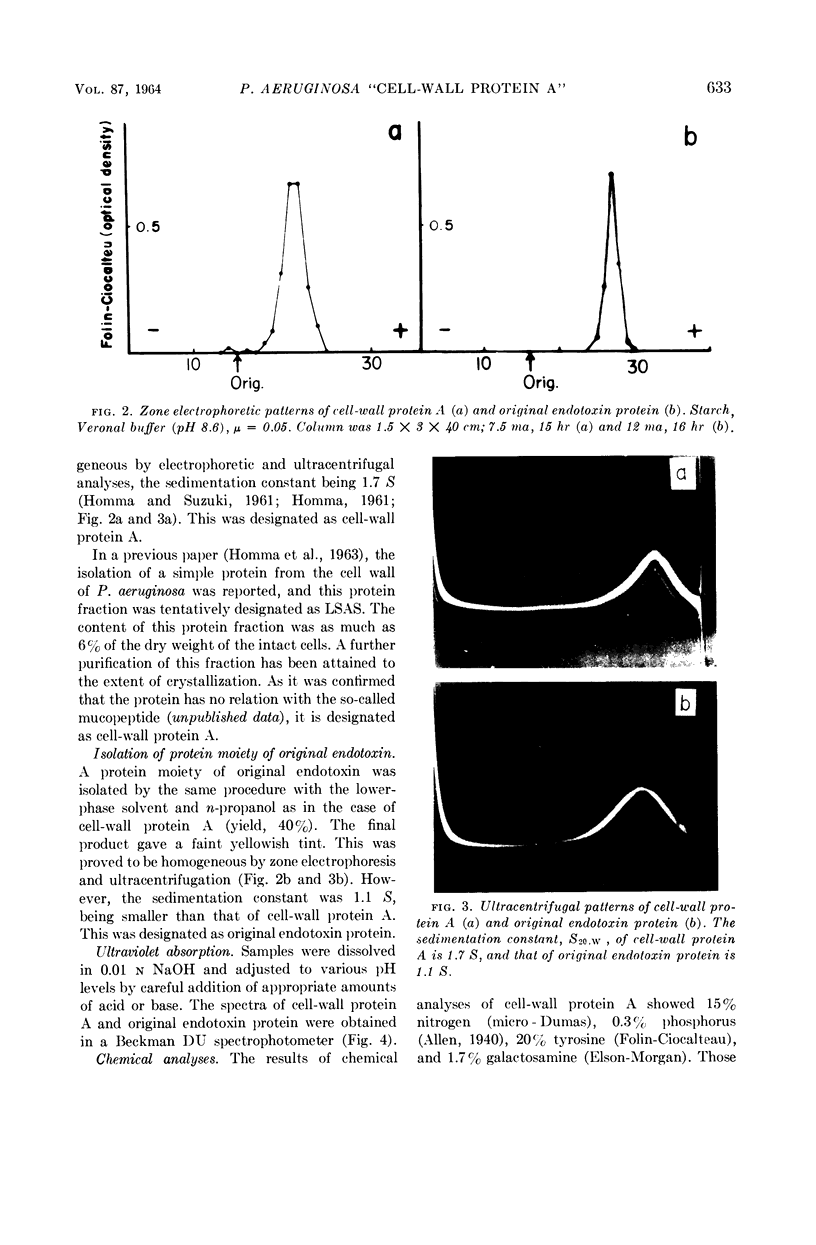
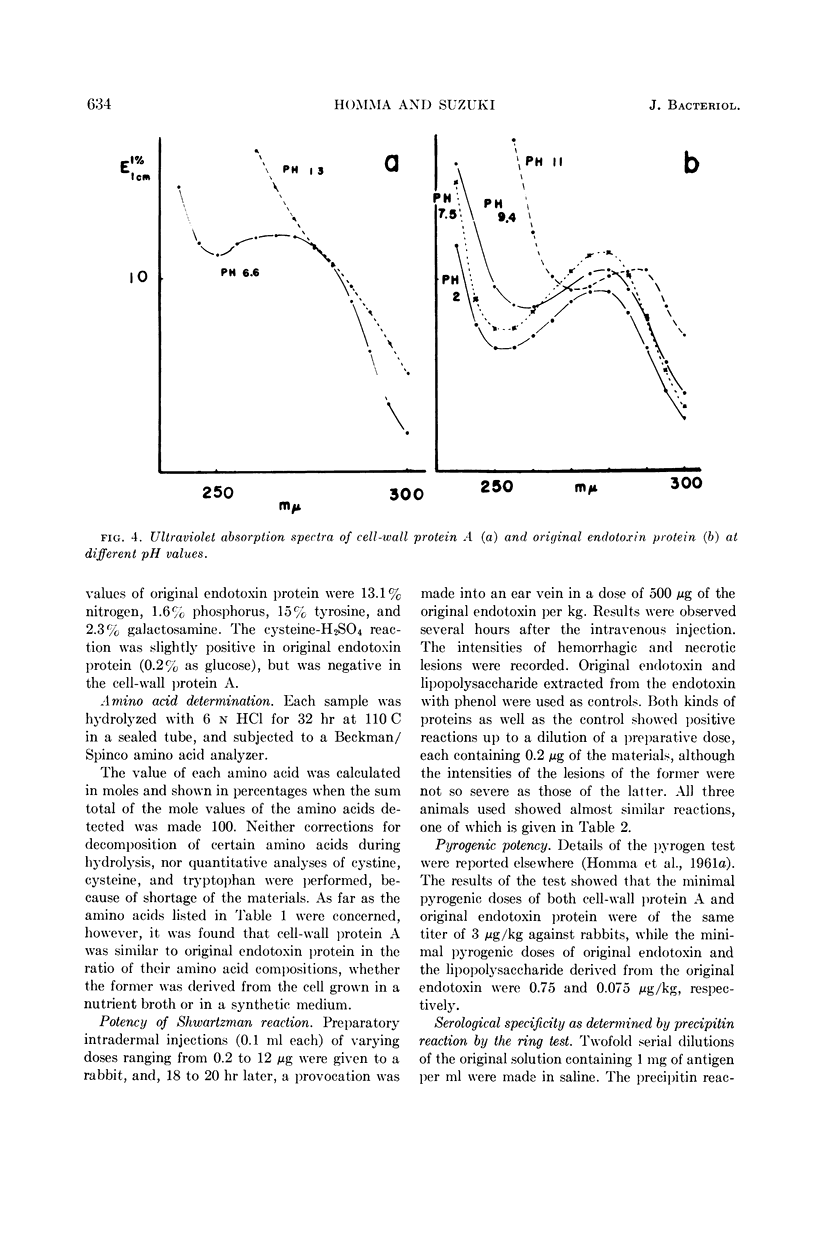
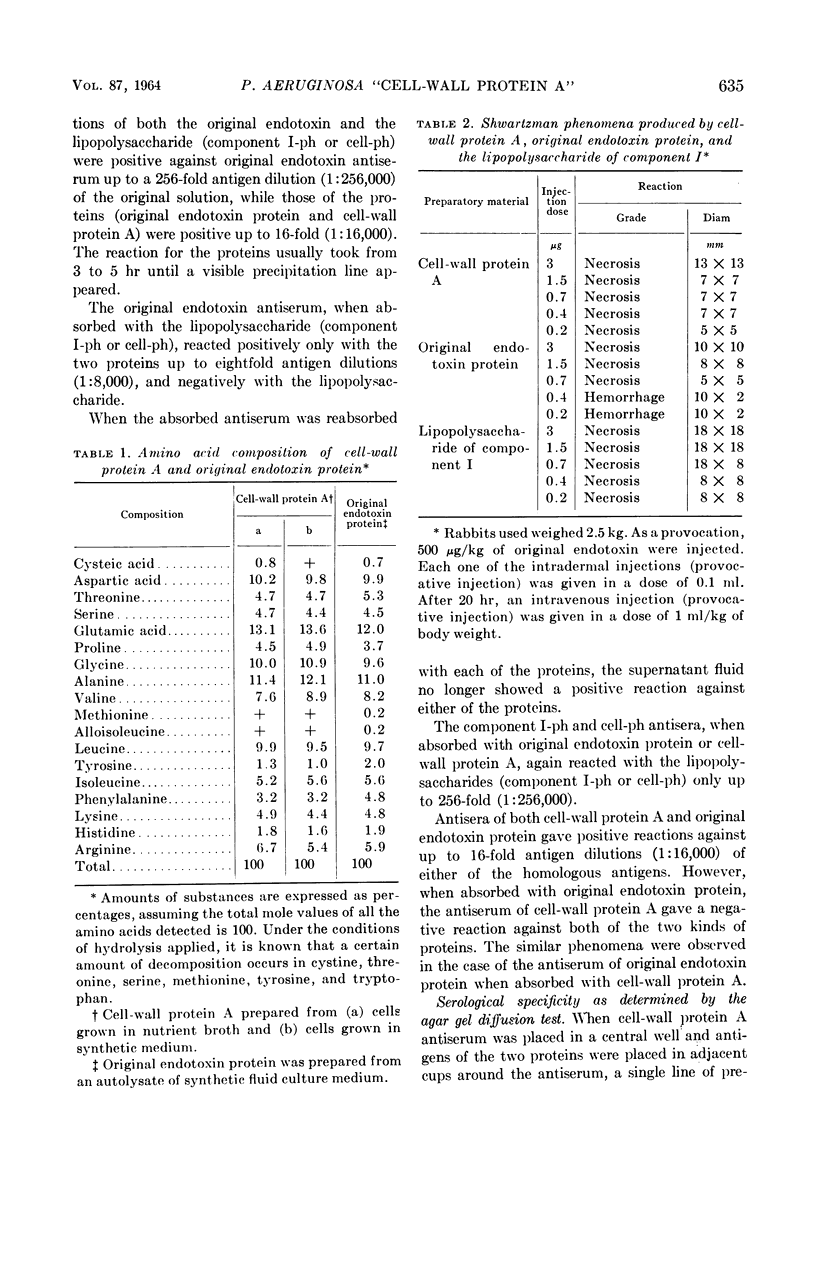
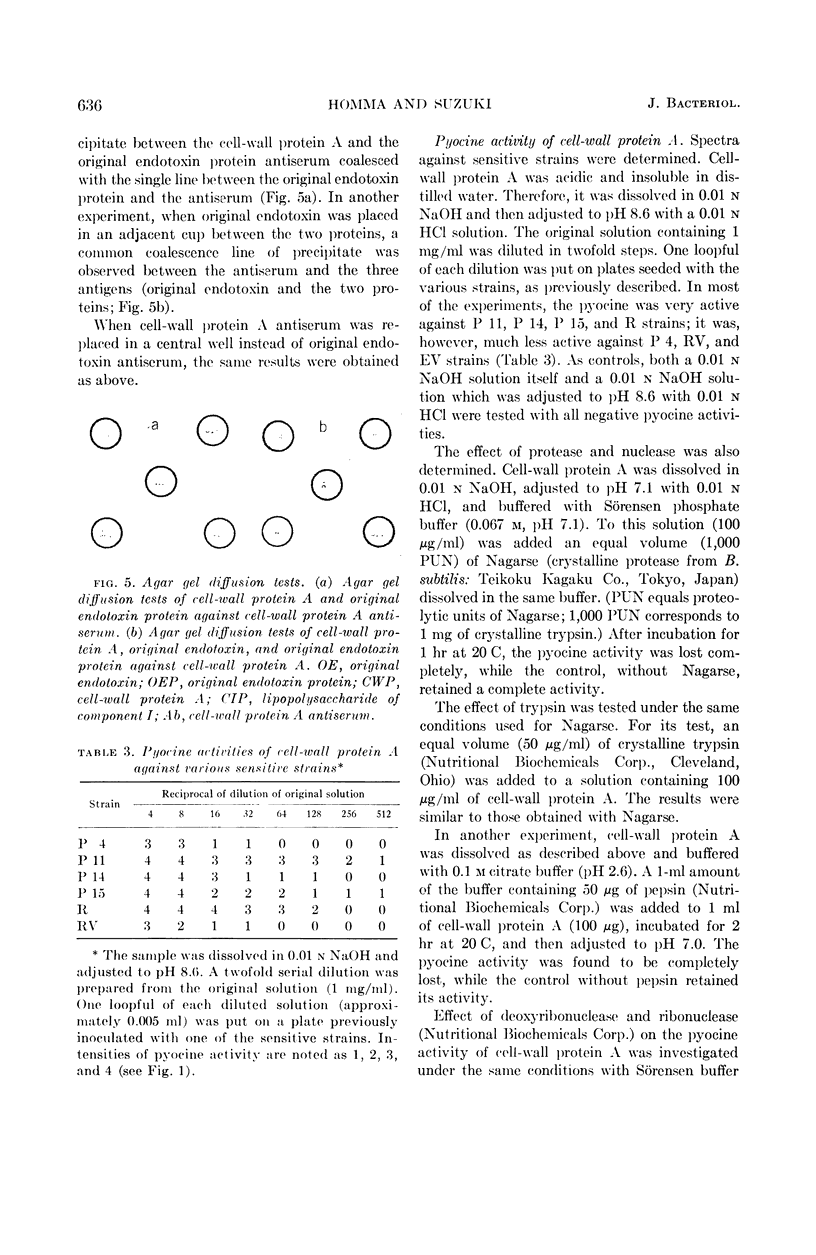
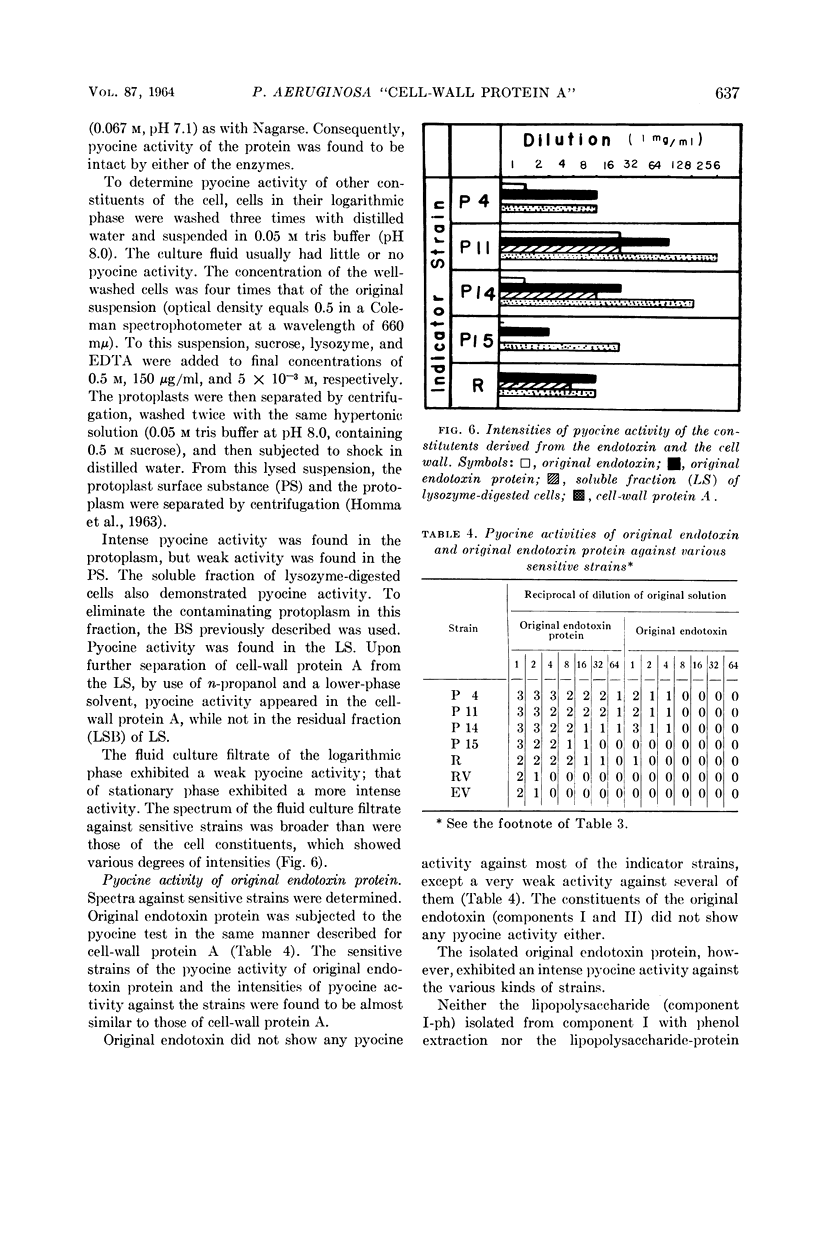
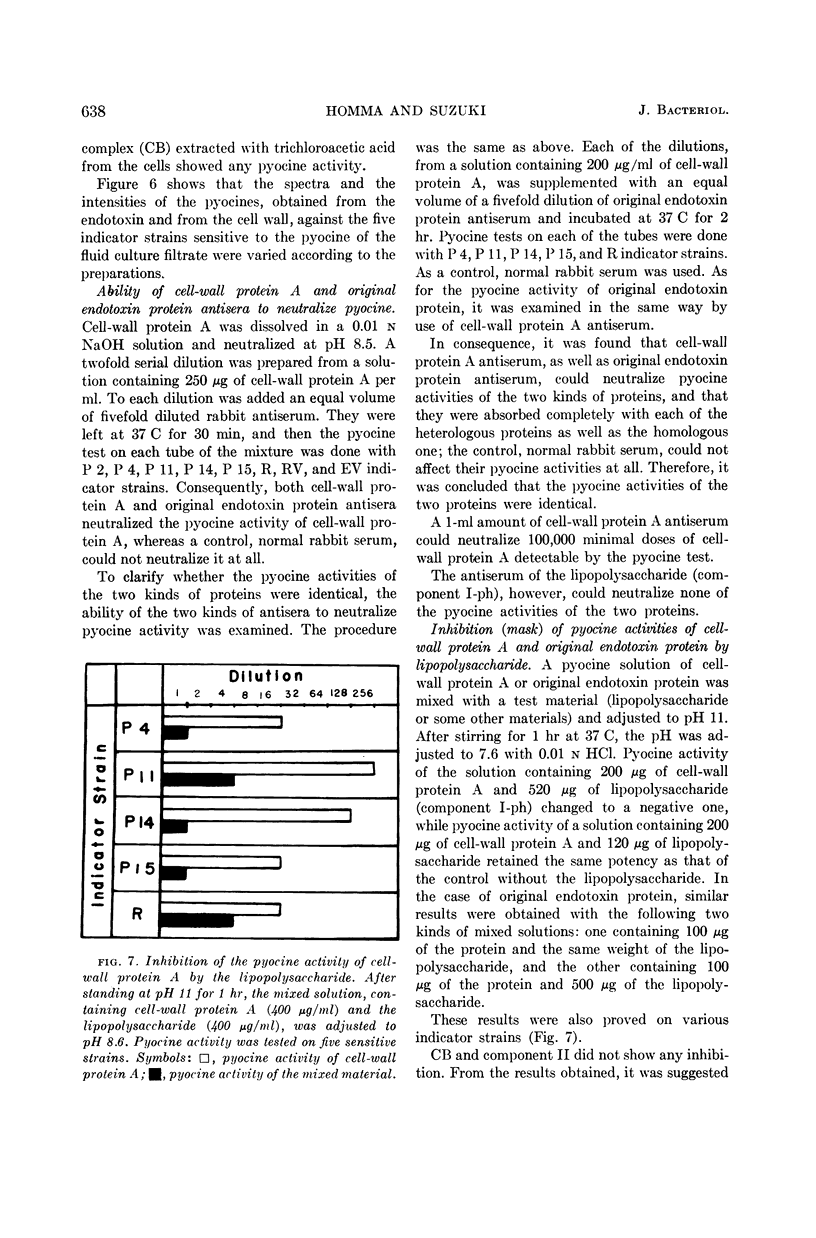


Images in this article
Selected References
These references are in PubMed. This may not be the complete list of references from this article.
- Allen R. J. The estimation of phosphorus. Biochem J. 1940 Jun;34(6):858–865. doi: 10.1042/bj0340858. [DOI] [PMC free article] [PubMed] [Google Scholar]
- GOEBEL W. F., BARRY G. T. Colicine K. II. The preparation and properties of a substance having colicine K activity. J Exp Med. 1958 Feb 1;107(2):185–209. doi: 10.1084/jem.107.2.185. [DOI] [PMC free article] [PubMed] [Google Scholar]
- HAMON Y. Contribution à l'étude des pyocines. Ann Inst Pasteur (Paris) 1956 Jul;91(1):82–90. [PubMed] [Google Scholar]
- HOMMA J. Y., SUZUKI N. A simple protein with pyocine activity isolated from the cell wall of Pseudomonas aeruginosa and its close relation to endotoxin. Jpn J Exp Med. 1961 Jun;31:209–213. [PubMed] [Google Scholar]
- HOMMA J. Y., SUZUKI N., ITO F. THE SURFACE STRUCTURE OF PSEUDOMONAS AERUGINOSA. J Immunol. 1963 May;90:819–828. [PubMed] [Google Scholar]
- HOMMA Y., SUZUKI N., FUKUYAMA S. [Studies on the surface structure of gram-negative bacteria and their biologically active substances. IV. On the pyocin activity of endotoxic protein]. Nihon Saikingaku Zasshi. 1962 Feb;17:123–129. [PubMed] [Google Scholar]
- KUNKEL H. G. Zone electrophoresis. Methods Biochem Anal. 1954;1:141–170. doi: 10.1002/9780470110171.ch6. [DOI] [PubMed] [Google Scholar]
- LOWRY O. H., ROSEBROUGH N. J., FARR A. L., RANDALL R. J. Protein measurement with the Folin phenol reagent. J Biol Chem. 1951 Nov;193(1):265–275. [PubMed] [Google Scholar]
- NAOI M., EGAMI F., HAMAMURA N., HOMMA J. Y. Das toxische Lipopolysaccharid von Pseudomonas aeruginosa. Biochem Z. 1958;330(5):421–427. [PubMed] [Google Scholar]
- NUSKE R., HOSEL G., VENNER H., ZINNER H. Uber ein Colicin aus Escherichia coli SG 710. Biochem Z. 1957;329(4):346–360. [PubMed] [Google Scholar]
- YAKULIS V. J., HELLER P. Rapid slide technic for double diffusion agar precipitin test. Am J Clin Pathol. 1959 Apr;31(4):323–325. doi: 10.1093/ajcp/31.4.323. [DOI] [PubMed] [Google Scholar]





